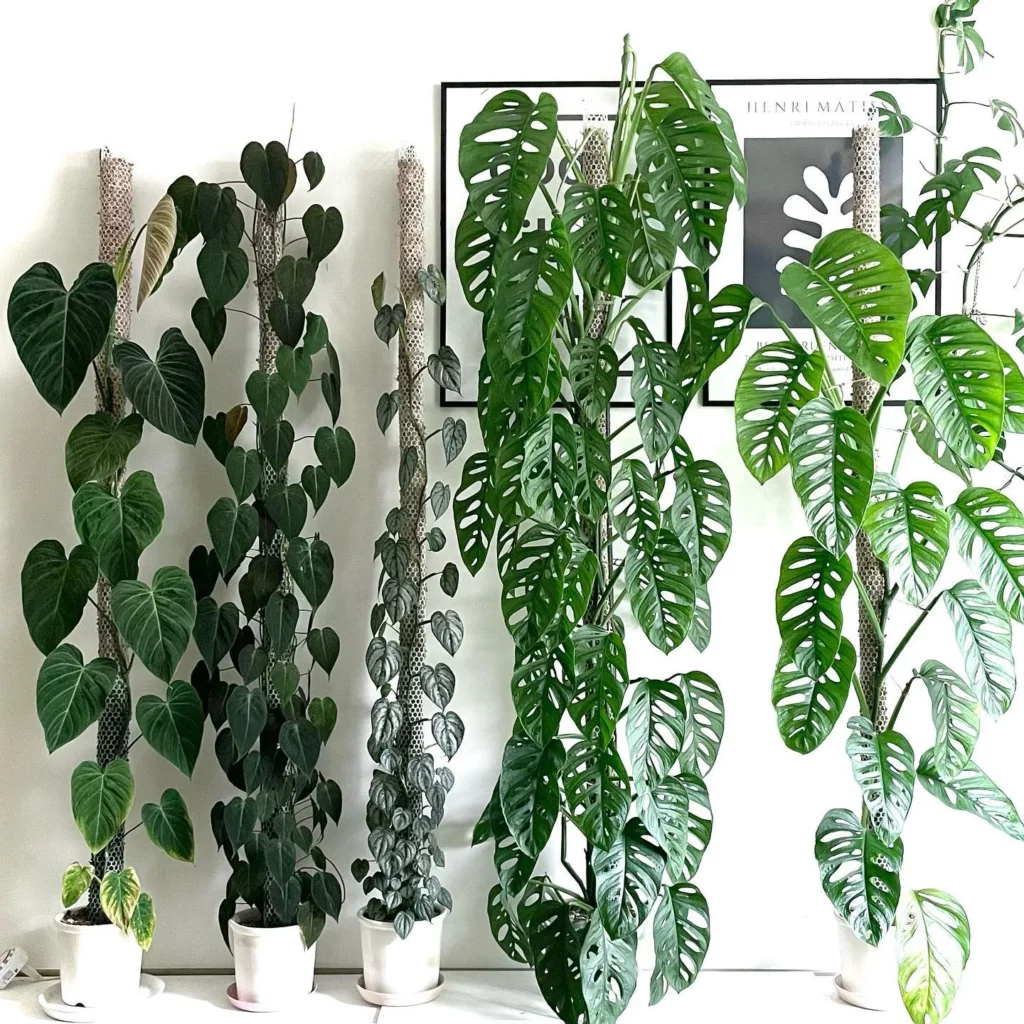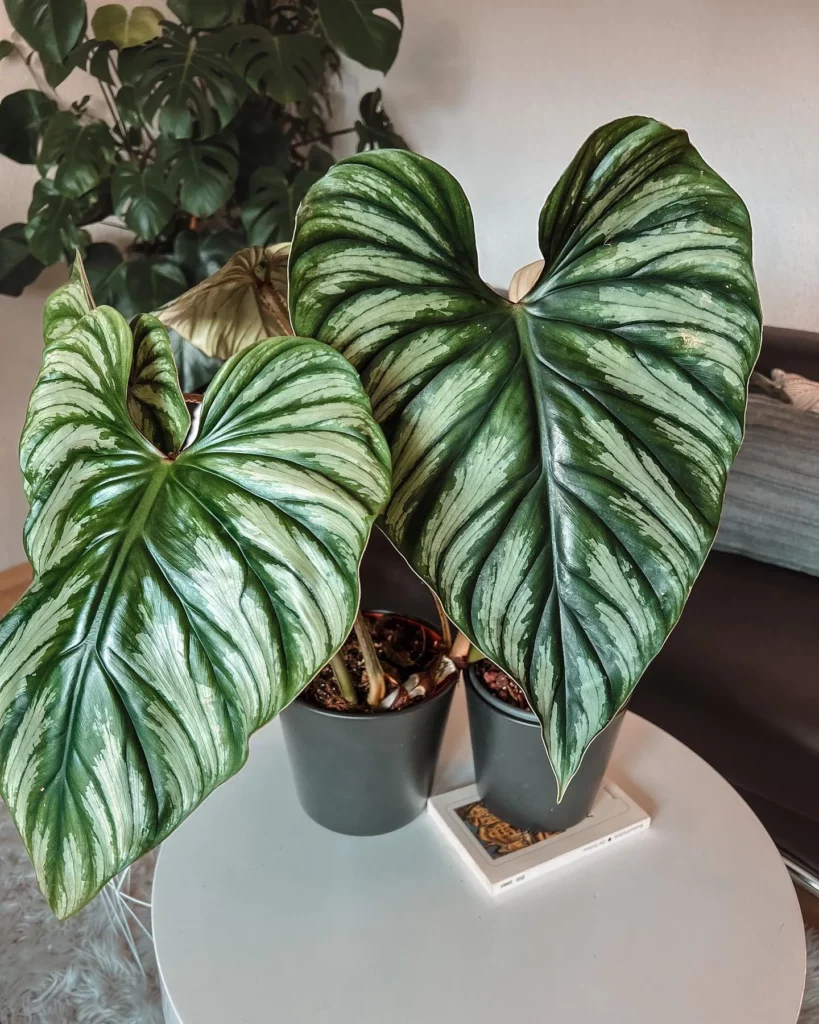If you’re a philodendron owner, you may have encountered the frustrating problem of your plant drooping. It’s a common issue that can leave you wondering what went wrong and how to fix it. In this article, we’ll explore the common causes of philodendron drooping and provide practical solutions to help revive your beloved plant.
Drooping in philodendrons can be caused by various factors, from overwatering to inadequate lighting, pest infestation, low humidity, and cold temperatures. Understanding these causes is crucial to implementing the right solutions and restoring your philodendron’s health and vitality.
By the end of this article, you’ll have the knowledge and tools to revive your drooping philodendron, ensuring it thrives and adds beauty to your indoor space once again!
Overview Of Philodendron Care


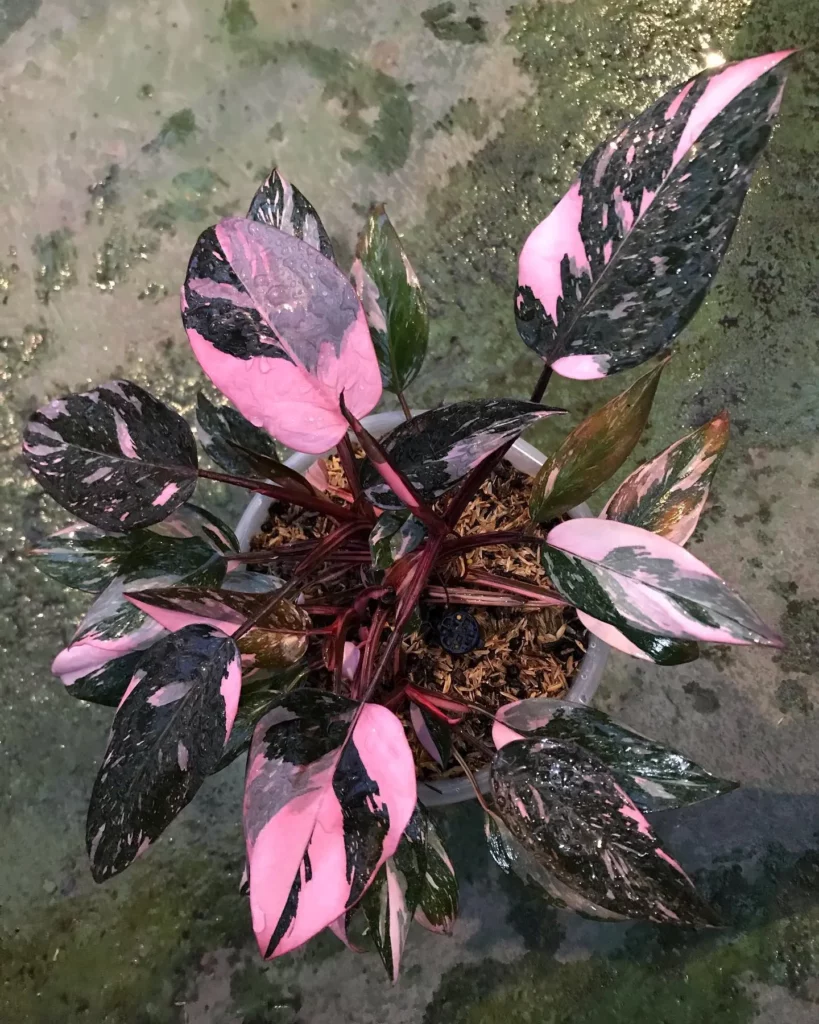
Proper care is essential for maintaining the health and beauty of your philodendron. Understanding its watering and humidity requirements, choosing the right soil mix, and fertilizing sparingly are crucial aspects of philodendron care.
Philodendrons thrive in well-draining soil that allows excess water to flow out easily. This helps prevent waterlogging and root rot. When it comes to watering, it’s important to strike a balance between underwatering and overwatering. Moderate watering is the key to keeping your philodendron healthy.
No products found.
Humidity is another critical aspect of philodendron care. These tropical plants prefer humidity levels between 50-60%. This mimics their natural habitat and keeps their foliage lush and vibrant. You can maintain the ideal humidity for your philodendron by using a humidifier or placing a tray of water near the plant.
Choosing the right soil mix is essential for the overall health of your philodendron. A well-draining mix that retains moisture without becoming waterlogged is ideal. You can create a suitable soil mix by combining peat moss, perlite, and a small amount of organic compost.
Fertilization is necessary to provide your philodendron with essential nutrients. It’s recommended to fertilize your plant once every few months during the growing season. Opt for an organic fertilizer specifically formulated for houseplants. This ensures healthy growth without the risk of overfeeding or nutrient burn.
Philodendron Care Guidelines
| Aspect of Philodendron Care | Guidelines |
|---|---|
| Watering | Moderate watering to prevent both underwatering and overwatering. Allow the top inch of soil to dry out before watering again. |
| Humidity | Maintain humidity levels between 50-60% by using a humidifier or placing a tray of water near the plant. Grouping plants together can also create a microclimate with higher humidity. |
| Soil Mix | Use a well-draining mix consisting of peat moss, perlite, and a small amount of organic compost. This ensures proper water drainage and prevents waterlogged soil. |
| Fertilization | Fertilize once every few months during the growing season with an organic houseplant fertilizer. Follow the manufacturer’s instructions for application rates. |
Possible Causes of Drooping Philodendrons
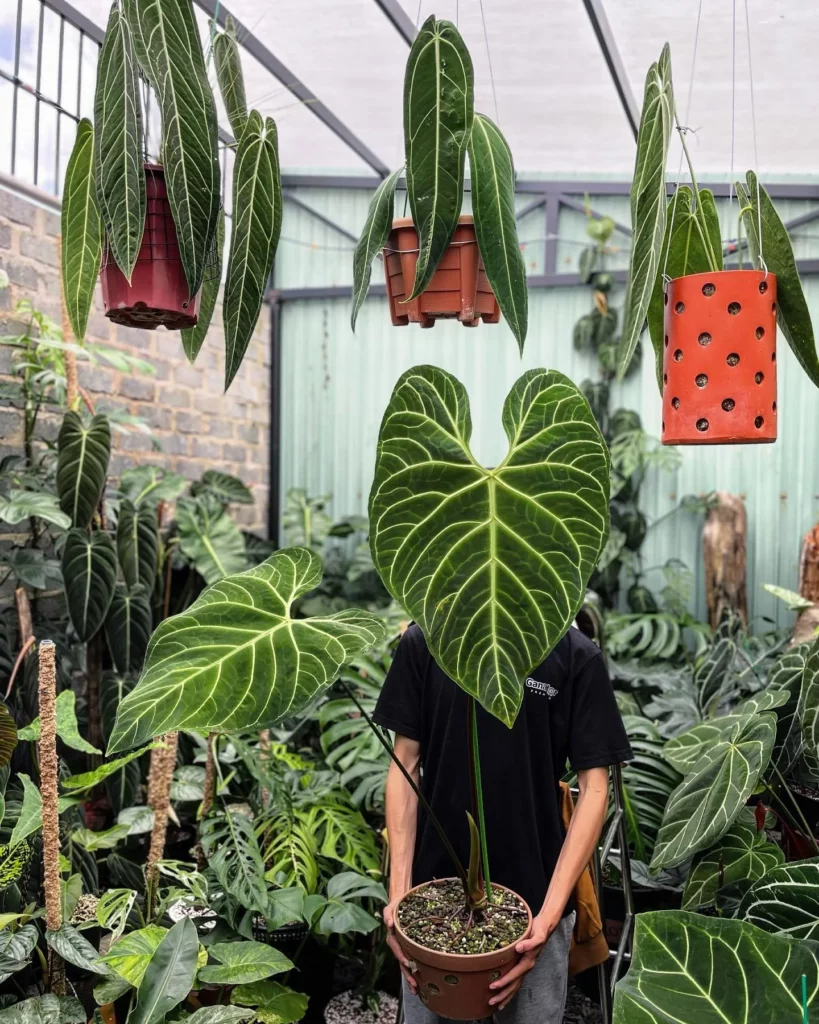
Is your philodendron looking droopy and sad? There are several potential causes for this common issue. Understanding the root causes of drooping philodendrons can help you identify and address the problem effectively. Let’s explore some possible factors:
Water-Related Issues
Watering your philodendron properly is crucial for its overall health. Both overwatering and underwatering can lead to drooping leaves and wilting. Here’s what to look out for:
| Issue | Signs | Solution |
|---|---|---|
| Overwatering | Yellowing leaves, mushy stems, wilting foliage | – Adjust your watering schedule and ensure proper drainage – Allow the topsoil to dry out before watering again |
| Underwatering | Dry or crispy leaves, brown tips | – Water your philodendron when the top inch of soil feels dry – Maintain the right soil moisture and watering frequency |
Light-Related Issues
Proper lighting is essential for philodendron growth. Insufficient or excessive light exposure can cause drooping and other issues. Consider the following:
| Issue | Signs | Solution |
|---|---|---|
| Inadequate Light | Yellowing leaves, stunted growth | – Place your philodendron near a window with bright indirect light – Consider using artificial grow lights to supplement natural light |
| Excessive Light | Scorched or browned leaves | – Move your philodendron away from direct sunlight – Use sheer curtains to filter intense light |
Pests and Diseases
Pest infestations and diseases can weaken your philodendron, causing it to droop. Be on the lookout for common pests and diseases:
| Pests | Signs | Treatment |
|---|---|---|
| Spider Mites | Webbing on leaves, discolored foliage | – Isolate the affected plant and clean it with a gentle soap and water solution – Introduce natural predators or use insecticides if necessary |
| Mealybugs | White fuzzy spots on leaves, sticky residue | – Isolate the affected plant and gently wipe off mealybugs with a cotton swab dipped in alcohol – Repeat treatment as needed |
| Thrips | Thinning leaves, silver-colored streaks | – Isolate the affected plant and use organic insecticidal soap or neem oil spray – Treat the plant as directed and repeat applications if necessary |
| Scale Insects | Small round bumps on leaves, honeydew secretion | – Isolate the affected plant and gently scrub the scale insects with a soft brush dipped in soapy water – Rinse the plant thoroughly and repeat treatment if needed |
Root-Bound Plants
When a philodendron becomes root-bound, with its roots tightly tangled and congested, it can lead to drooping and hinder growth. If you suspect your plant is root-bound, it’s time to repot it. Follow these steps:
- Select a larger pot with drainage holes
- Carefully remove the philodendron from its current pot
- Gently loosen the roots and remove any dead or damaged ones
- Place fresh, well-draining soil in the new pot
- Transfer the philodendron and fill the remaining space with soil
- Water the plant thoroughly and allow any excess water to drain
Water-Related Issues
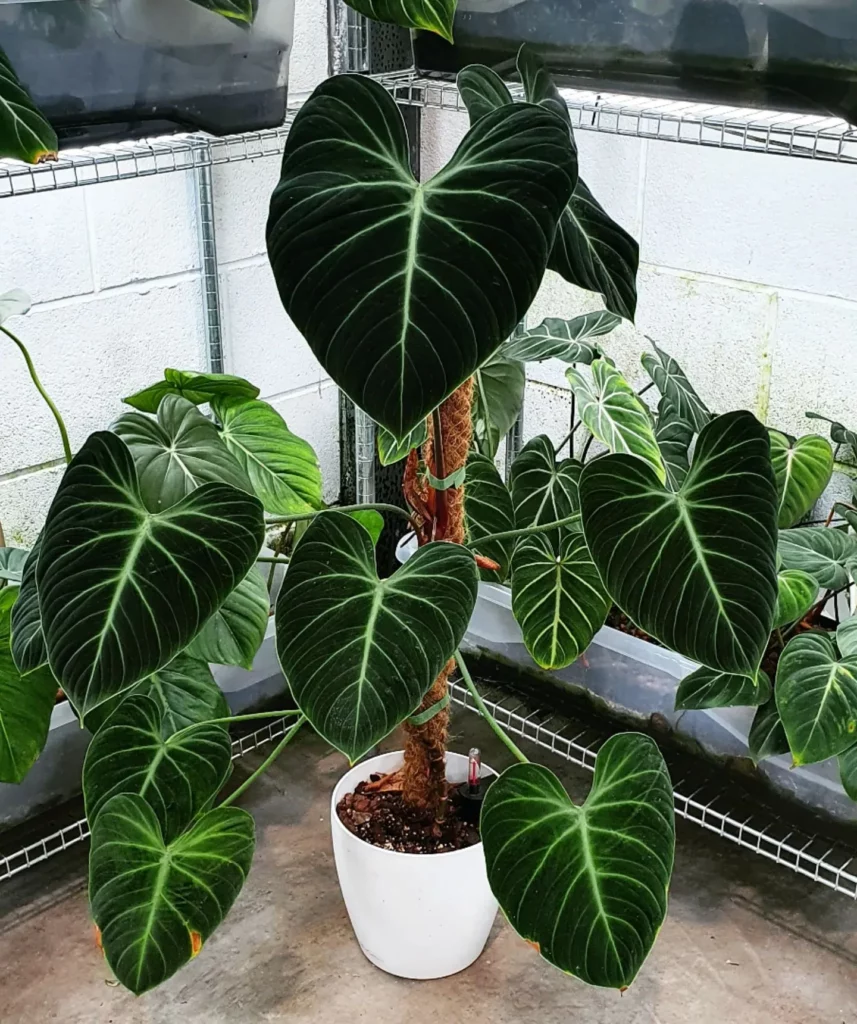
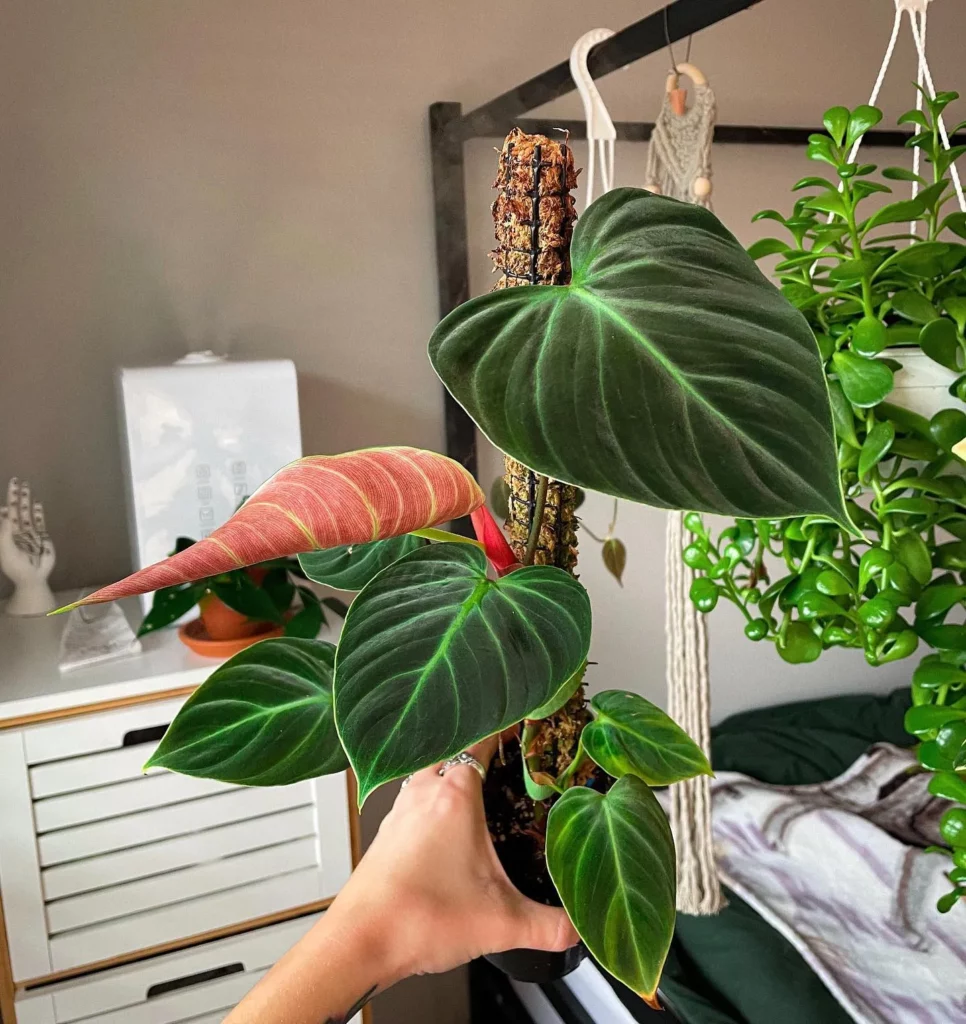
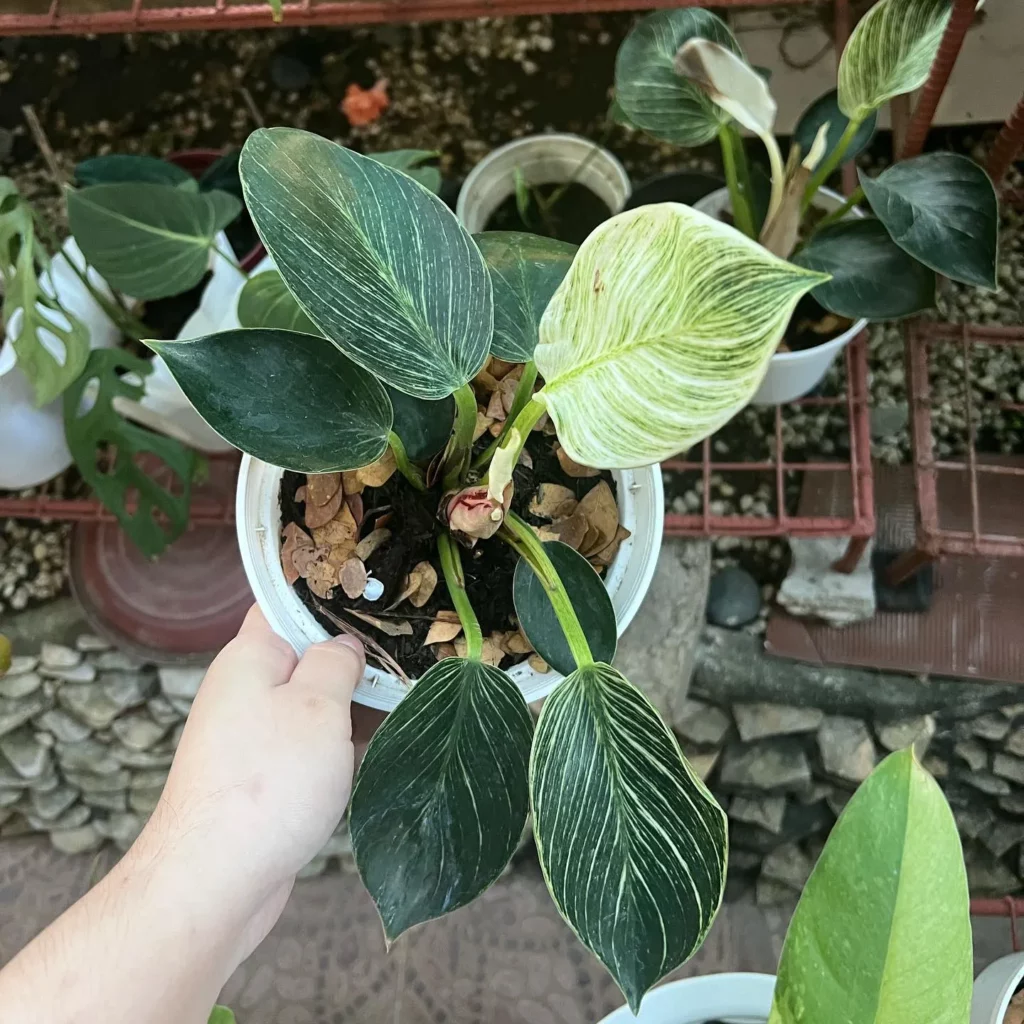
Proper watering is vital for the health of your philodendron. However, both overwatering and underwatering can lead to drooping leaves and overall decline.
Understanding the signs and taking preventive measures is crucial in maintaining the optimal moisture balance for your plant.
No products found.
Signs of Overwatering
Overwatering your philodendron can suffocate its roots and inhibit proper nutrient absorption. If you notice the following signs, it’s likely that your plant is being overwatered:
- Yellowing leaves
- Mushy stems
- Wilting foliage
Prevention and Treatment
To prevent overwatering and ensure the health of your philodendron, follow these tips:
- Check the moisture level of the soil before watering. If the top inch of soil feels moist, hold off on watering.
- Ensure proper drainage in your pot by using a well-draining soil mix and adding drainage holes if needed.
- Establish a watering schedule based on the specific needs of your philodendron and the moisture retention of the soil. Allow the soil to dry out slightly between waterings.
Signs of Underwatering
If your philodendron is not receiving enough water, the following signs may indicate underwatering:
- Dry or crispy leaves
- Brown tips on the leaves
Prevention and Treatment
To prevent underwatering and keep your philodendron properly hydrated, consider the following:
- Monitor the moisture level of the soil and water when the top inch feels dry.
- Ensure adequate hydration by maintaining the right soil moisture.
Watering Tips
Here are some general guidelines for watering your philodendron:
| Watering Tips for Philodendrons |
|---|
| Water your philodendron thoroughly, allowing excess water to drain out. |
| Ensure the top inch of soil is dry before watering again. |
| Consider your plant’s specific needs and adjust your watering schedule accordingly. |
| Avoid using hard tap water as it may contain minerals that could accumulate in the soil. |
Light-Related Issues

One of the key factors in maintaining the health of your philodendron is providing it with the right amount of light. Philodendrons require bright but indirect light for optimal growth. Inadequate or excessive light can lead to various issues.
If your philodendron is not receiving enough light, you may notice symptoms such as yellowing leaves and stunted growth. This indicates that the plant is not receiving the energy it needs to thrive. To address this issue, you can adjust the placement of your plant to a location with more light. Placing it near a window or using sheer curtains can help filter the light and create the ideal conditions.
Excessive light exposure can cause scorched or browned leaves, indicating that the plant is experiencing stress.
If you notice these symptoms, it’s important to move your philodendron to a spot with less direct sunlight. Providing shade or using blinds can help protect your plant from excessive light.
No products found.
For areas with inadequate natural light, you may consider supplementing with artificial grow lights. These lights mimic natural sunlight and can provide the necessary light intensity for your philodendron’s growth.
When using grow lights, position them at an appropriate distance from the plant to avoid burning the leaves.
Light requirements for philodendrons:
| Light Level | Symptoms | Solutions |
|---|---|---|
| Bright but indirect light | Healthy growth, vibrant foliage | Place near a window or provide artificial grow lights to supplement light |
| Inadequate light | Yellowing leaves, stunted growth | Adjust plant placement to a location with more light or use sheer curtains |
| Excessive light | Scorched or browned leaves | Move plant to a spot with less direct sunlight or provide shade |
Pests And Diseases
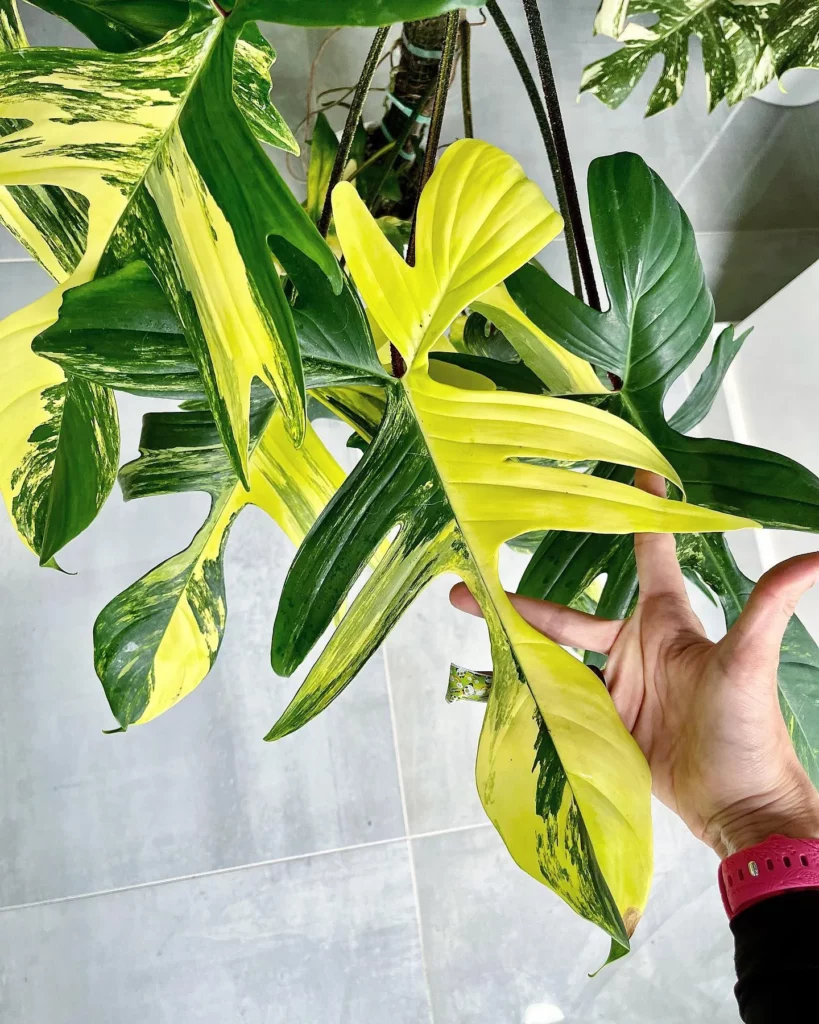
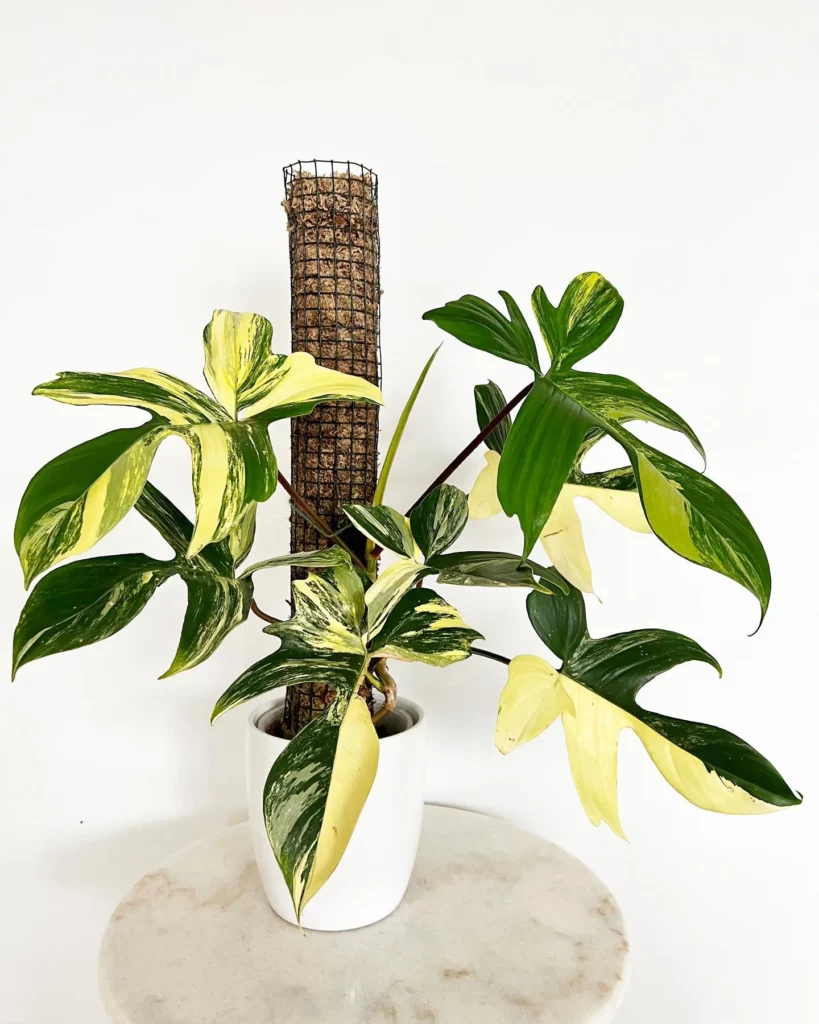
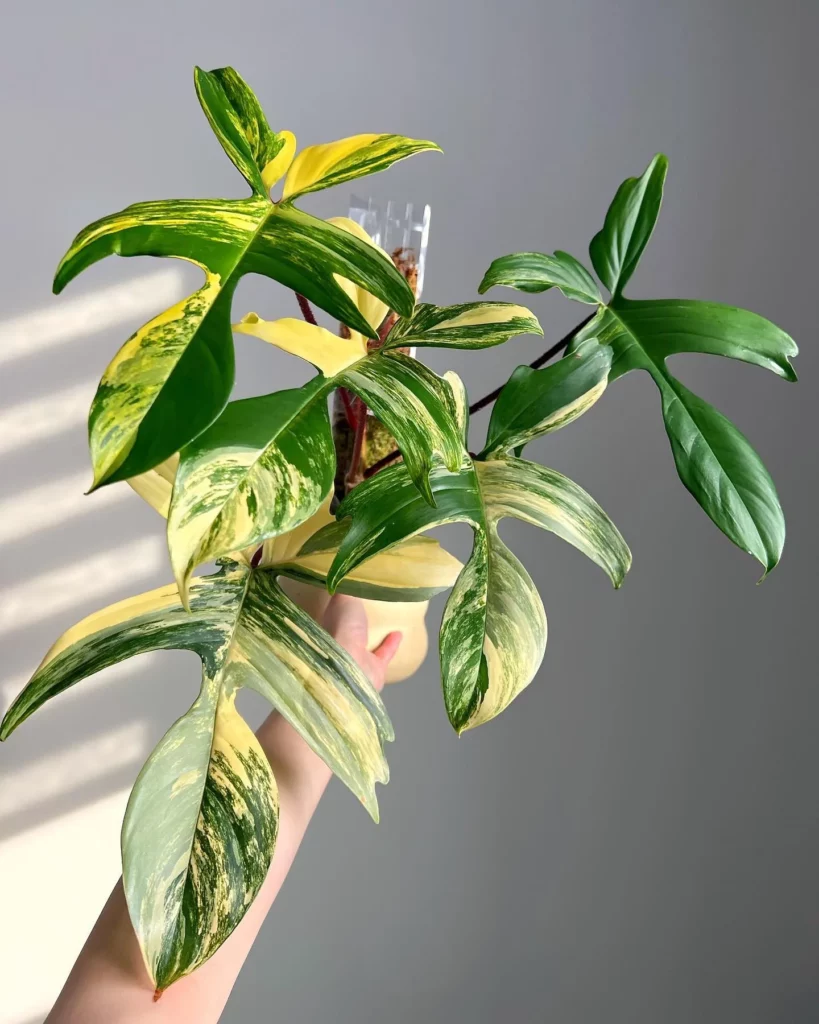
Philodendrons are beautiful houseplants that can bring life and vibrancy to any space. However, just like any other plant, they are susceptible to pests and diseases that can harm their health and appearance. It’s important to regularly inspect your philodendrons for any signs of common pests and diseases so that you can take appropriate action to treat and prevent further damage.
No products found.
Some of the common pests that can affect philodendrons include:
| Pest | Treatment |
|---|---|
| Spider mites | Isolate the plant and remove any heavily infested leaves. Use a gentle soap and water solution to wash the affected areas. Repeat treatment as necessary. |
| Mealybugs | Isolate the plant and remove mealybugs manually using a cotton swab dipped in rubbing alcohol. Apply insecticidal soap or neem oil if the infestation is severe. |
| Thrips | Isolate the plant and use yellow sticky traps to catch adult thrips. Spray the plant with an insecticidal soap or neem oil solution to control the population. |
| Scale insects | Isolate the plant and remove scale insects manually with a cotton swab dipped in rubbing alcohol. Repeat treatment every few weeks until the infestation is under control. |
In addition to pests, philodendrons can also be prone to certain diseases. It’s important to be vigilant and promptly address any signs of disease to prevent its spread and minimize damage to your plant. Some common diseases that affect philodendrons include:
- Root rot
- Leaf spot
- Anthracnose
- Powdery mildew
If you notice any unusual spots, discoloration, or wilting on your philodendron’s leaves, it’s important to identify the specific disease and take appropriate action to treat it.
In some cases, you may need to remove and dispose of severely affected leaves or even repot the plant in fresh soil.
Low Humidity
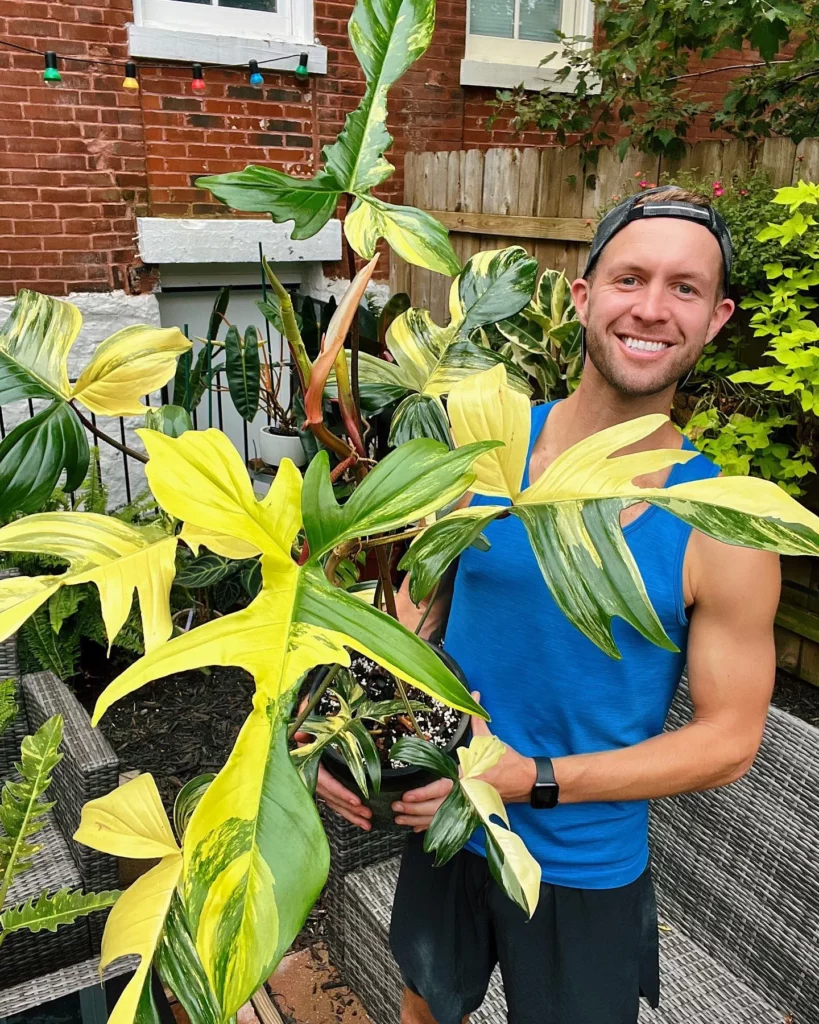
Philodendrons thrive in relatively high humidity levels between 50-60%. Low humidity can have negative effects on your philodendron, causing drooping leaves and overall stress.
To combat low humidity and create a more suitable environment for your philodendron, there are several solutions you can implement:
- Use a humidifier: Adding a humidifier near your philodendron can help increase the moisture levels in the air.
- Tray of water: Place a tray of water near the plant so that as the water evaporates, it creates a humid microclimate around the philodendron.
- Grouping plants together: By clustering your philodendron with other plants, you can create a small ecosystem that increases humidity levels.
It’s important to avoid placing your philodendron near dry air sources such as heaters or air conditioners, as they can further contribute to low humidity.
Climate Too Cold

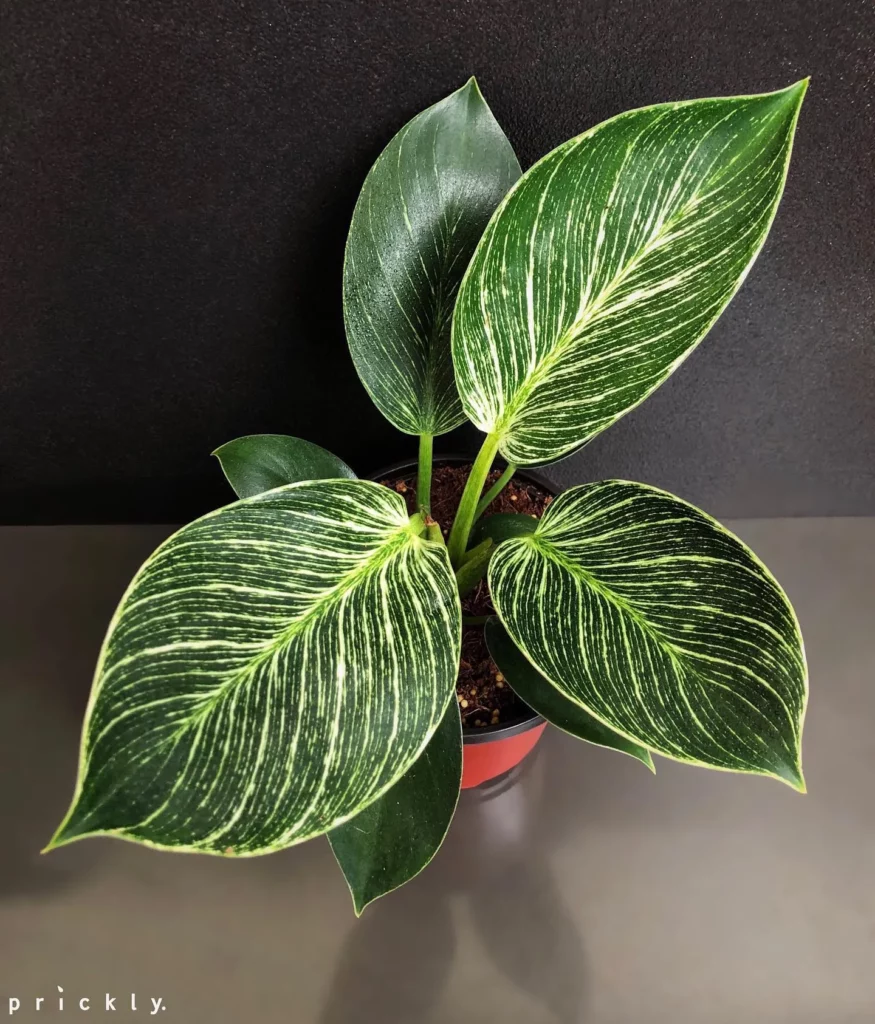
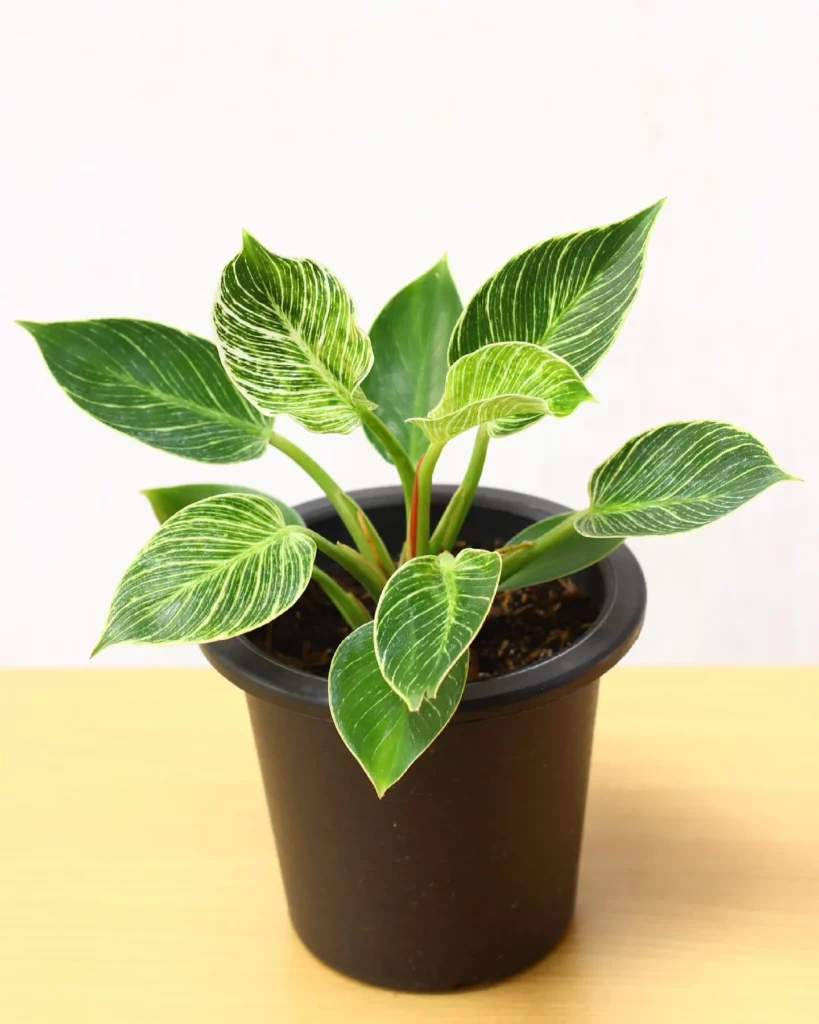
Philodendrons prefer average room temperatures and can be sensitive to cold draughts. Exposure to cold temperatures can have adverse effects on your philodendron, causing drooping leaves and leaf shedding.
To prevent cold-related drooping, it is important to take preventative measures:
- Avoid placing your philodendron near open windows or air conditioning vents, as this can expose the plant to cold draughts.
- Provide a warm and draft-free environment for your philodendron by keeping it away from areas where there are cold air sources.
Avoiding exposure to cold temperatures will help keep your philodendron healthy and prevent drooping due to the cold climate.
Fertilizing Tips
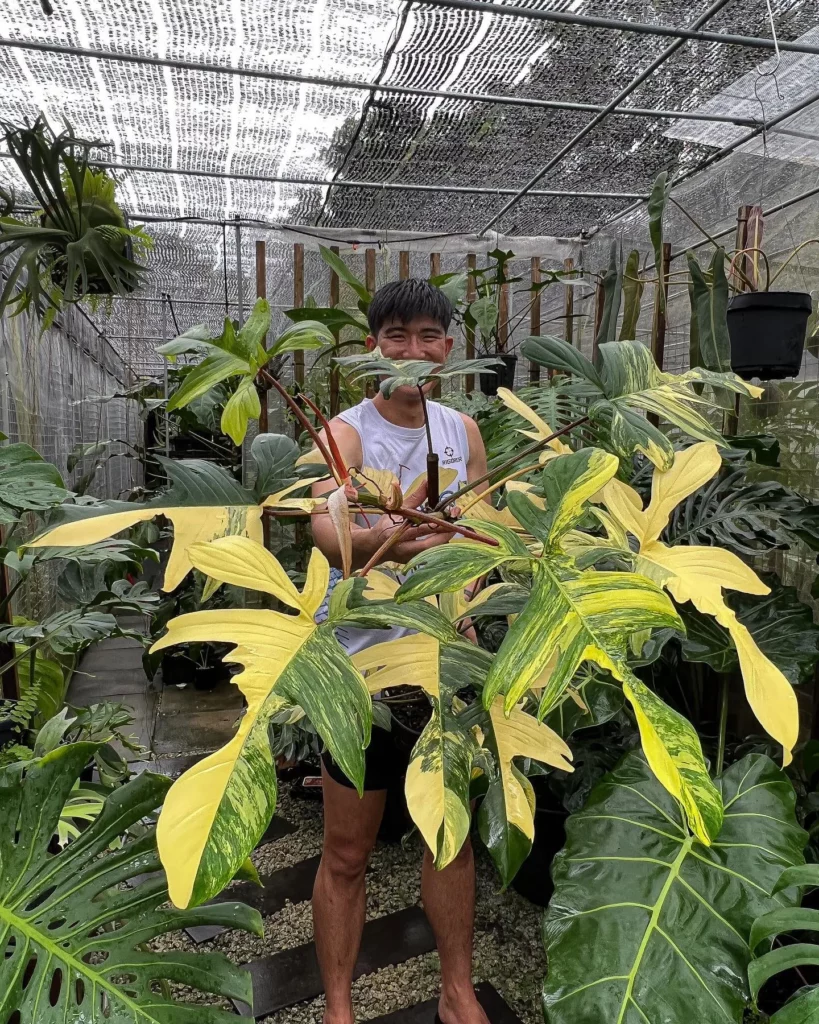
Proper fertilization is crucial for the health of your philodendron. By providing the right nutrients, you can promote vigorous growth and vibrant foliage. However, it’s important to fertilize your philodendron with caution to prevent any potential harm.
To fertilize your philodendron effectively, consider the following tips:
1. Choose an Organic Fertilizer
Select an organic fertilizer specifically formulated for houseplants. Organic fertilizers release nutrients slowly, reducing the risk of over-fertilizing and burning the roots of your philodendron.
2. Follow the Manufacturer’s Instructions
Read and follow the recommended application rates provided by the fertilizer manufacturer. Applying too much fertilizer can have adverse effects on your philodendron’s growth and overall health.
3. Fertilize Sparingly
It’s important to fertilize your philodendron sparingly to avoid nutrient Buildup. Over-fertilizing can lead to burned roots and stunted growth. Remember, less is more when it comes to fertilizing.
4. Dilute the Fertilizer
Prior to application, dilute the fertilizer according to the manufacturer’s instructions. This ensures that the nutrients are evenly distributed and prevents the risk of nutrient overload in specific areas of the soil.
5. Always Err on the Side of Caution
When it comes to fertilizing your philodendron, it’s better to under-fertilize than over-fertilize. If you’re unsure about the appropriate amount, it’s always safer to use less fertilizer rather than risking the health of your plant.
Repotting Importance
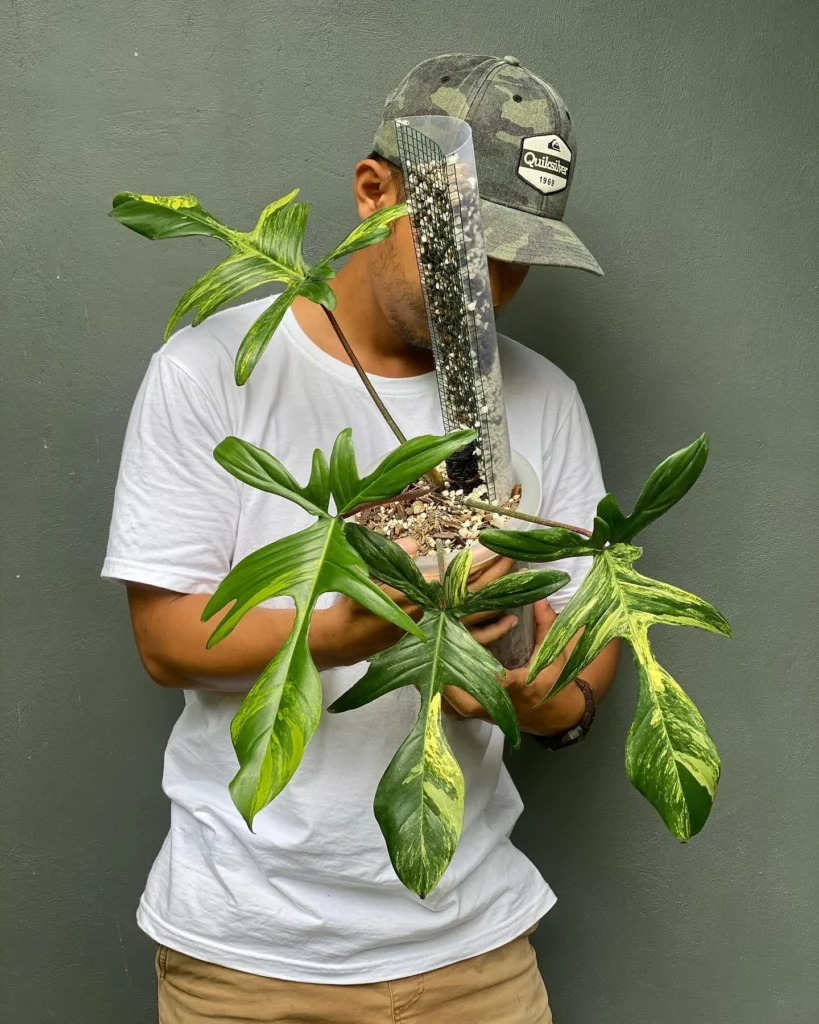
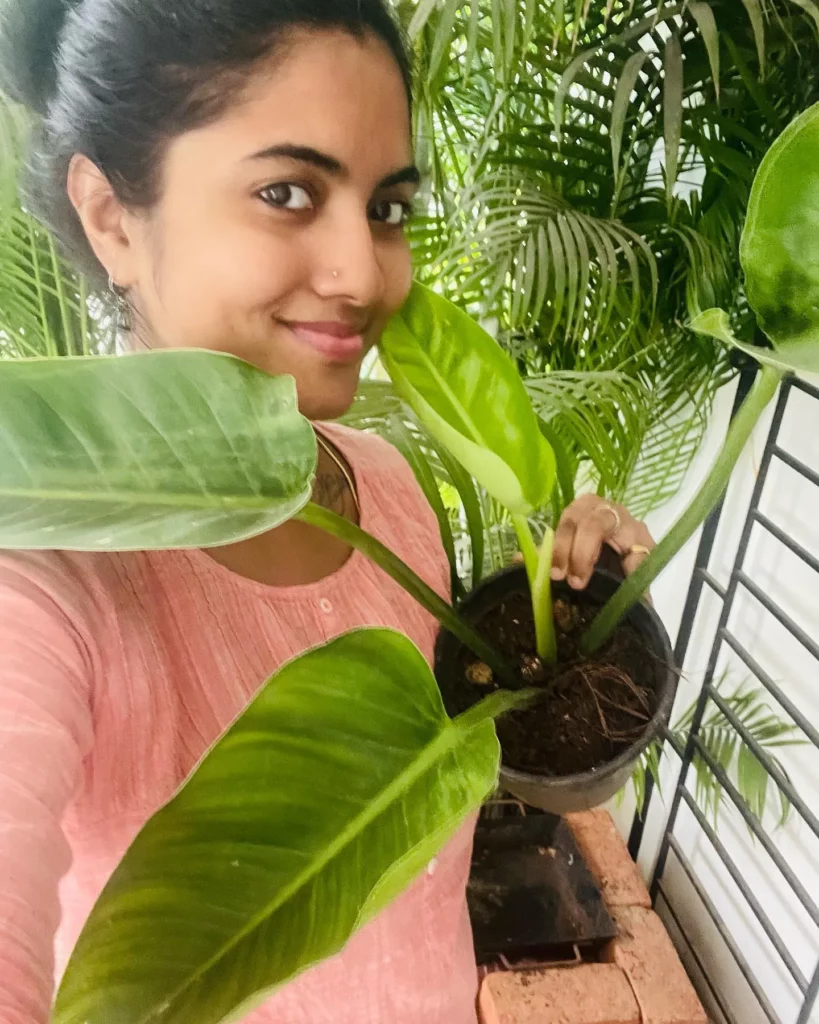
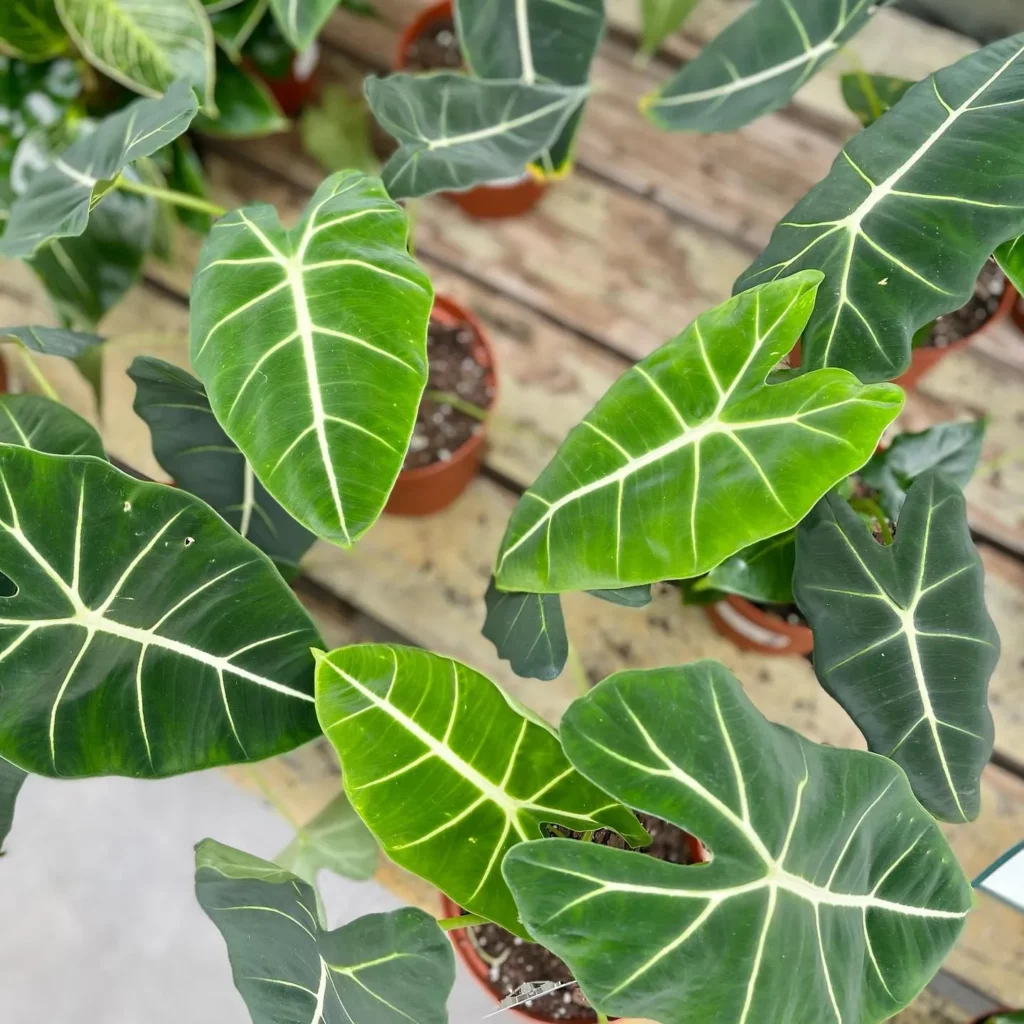
Proper repotting is crucial for maintaining the health and vitality of your philodendron. Over time, the soil in the pot can become depleted and compacted, inhibiting proper drainage and nutrient absorption. This can lead to drooping leaves and stunted growth. Repotting your philodendron every 1-2 years promotes healthy root development and prevents issues like root-bound plants.
When repotting, choose a well-draining soil mix specifically formulated for houseplants. This helps prevent soil compaction and provides the necessary nutrients for optimal growth. Additionally, select a pot that is one size larger than the current one to give your philodendron ample space for root expansion.
Here is a step-by-step guide to repotting your philodendron:
- Carefully remove the philodendron from its current pot, gently loosening the roots.
- Inspect the roots for any signs of rot or damage and trim as necessary.
- Fill the new pot with a layer of fresh soil.
- Place the philodendron in the center of the pot, ensuring it is upright.
- Add soil around the sides, gently firming it down to eliminate air pockets.
- Water the plant thoroughly to help settle the soil.
- Place the repotted philodendron in a location with the appropriate light and humidity levels.
Preventative Measures and Plant Care Tips
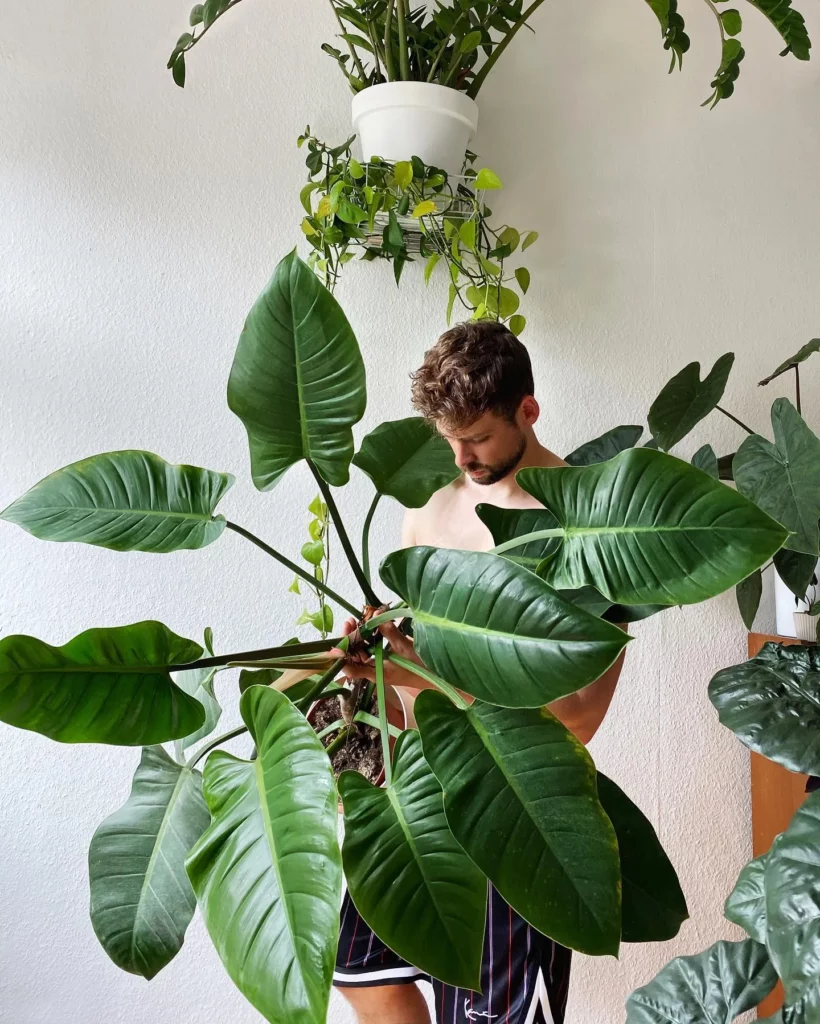
To keep your philodendron healthy and thriving, it’s essential to implement preventative measures and follow proper plant care practices. By taking proactive steps, you can prevent common issues and ensure the well-being of your beloved plant.
Regular Inspections for Pest Control
Regularly inspecting your philodendron for pests is a crucial preventative measure. Pests like spider mites, mealybugs, and scale insects can damage your plant and lead to drooping leaves and overall poor health. Keep an eye out for signs such as webbing, tiny insects, or white fuzzy spots on the leaves.
To control pests, consider using natural methods like introducing predatory insects or using neem oil sprays. These approaches effectively combat pests while minimizing the use of harmful chemicals that can harm the environment and your plant.
Maintaining Optimal Growing Conditions
Maintaining optimal growing conditions is another preventative measure that significantly contributes to plant health. Ensure that your philodendron is placed in an area with appropriate lighting, temperature, and humidity levels.
Philodendrons thrive in bright but indirect light. Place your plant near a window that provides ample natural light, or consider using artificial grow lights to supplement the available light.
Temperature and humidity are also essential factors to consider. Avoid exposing your philodendron to cold drafts or extreme temperature fluctuations. Maintain a humidity level between 50-60% to provide the right environment for healthy growth.
The Importance of Regular Repotting
Regular repotting is crucial for the long-term health of your philodendron. Over time, the soil in the pot can become depleted and compacted, restricting root growth and causing issues like root-bound plants.
By repotting your philodendron every 1-2 years, you provide fresh soil, ample space for root development, and better drainage. This simple step helps prevent drooping and promotes healthy growth and vitality.
| Preventative Measures | Benefits |
|---|---|
| Regular inspections for pests | – Early detection and control of pests – Minimized damage to the plant |
| Maintaining optimal growing conditions | – Promotes healthy growth and foliage – Prevents stress and drooping |
| The importance of regular repotting | – Provides fresh soil and nutrients – Prevents root-bound plants – Supports overall plant health |
Reviving a Wilting Philodendron
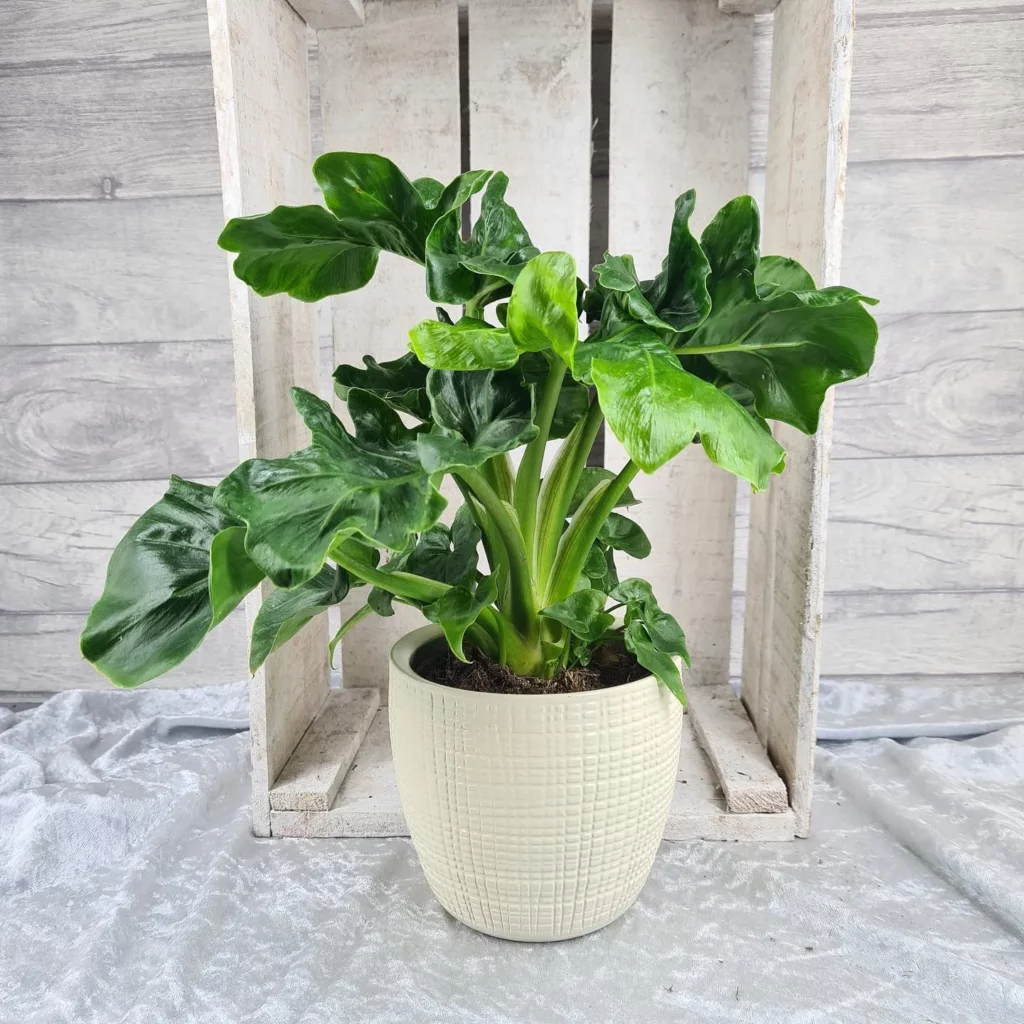
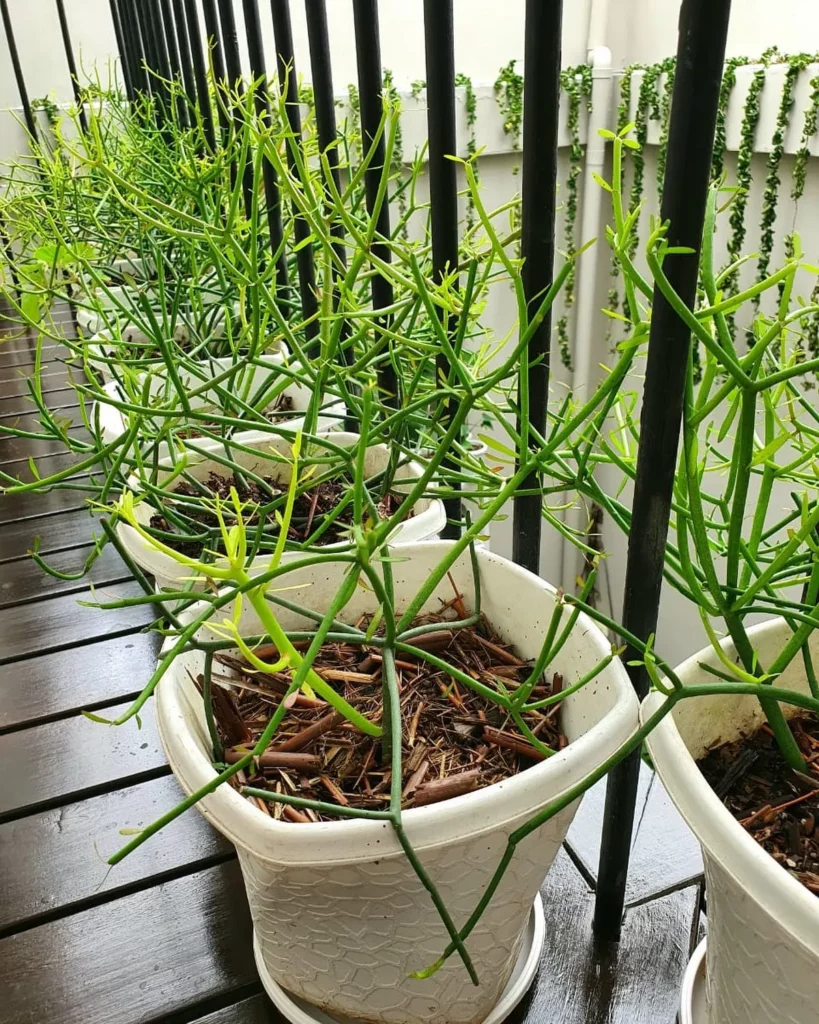

Is your philodendron looking droopy and wilted? Don’t worry, you can revive it with a little care and attention. Here are some steps to help your wilting philodendron bounce back:
- Adjust your watering schedule: Check the moisture level of the soil before watering. Overwatering or underwatering can cause your philodendron to wilt. Ensure the right soil moisture by watering when the top inch of soil feels dry.
- Ensure proper drainage: Good drainage is crucial for preventing waterlogged soil, which can suffocate the roots and lead to wilting. Make sure your pot has drainage holes and remove any excess water from the saucer.
- Provide adequate light: Philodendrons need bright but indirect light to thrive. Place your plant near a window that offers ample natural light. If your philodendron is not getting enough light, it may become weak and wilted.
- Use support options: If your philodendron’s stems are drooping, provide support by gently tying them to stakes or using plant clips. This will help the plant stand upright and regain its posture.
Signs of Overwatered Philodendron

Overwatering can be detrimental to the health of your philodendron. It occurs when the plant receives an excessive amount of water, leading to various signs that indicate an overwatered condition.
One of the most noticeable signs of overwatering is yellowing leaves. When the roots of the philodendron are constantly saturated, they have difficulty absorbing oxygen, causing the leaves to turn yellow.
Overwatering can result in mushy stems, as the excess water causes the tissue to become soft and weak.
Another common symptom of an overwatered philodendron is wilting foliage. While it may seem counterintuitive, wilting can occur as a result of root rot caused by overwatering. The damaged roots are unable to supply enough water and nutrients to the plant, leading to wilting and overall decline.
To address overwatering issues, it is crucial to adjust your watering habits. Allow the top inch of soil to dry out before watering again. Ensure that your philodendron is potted in well-draining soil and that the container has proper drainage holes.
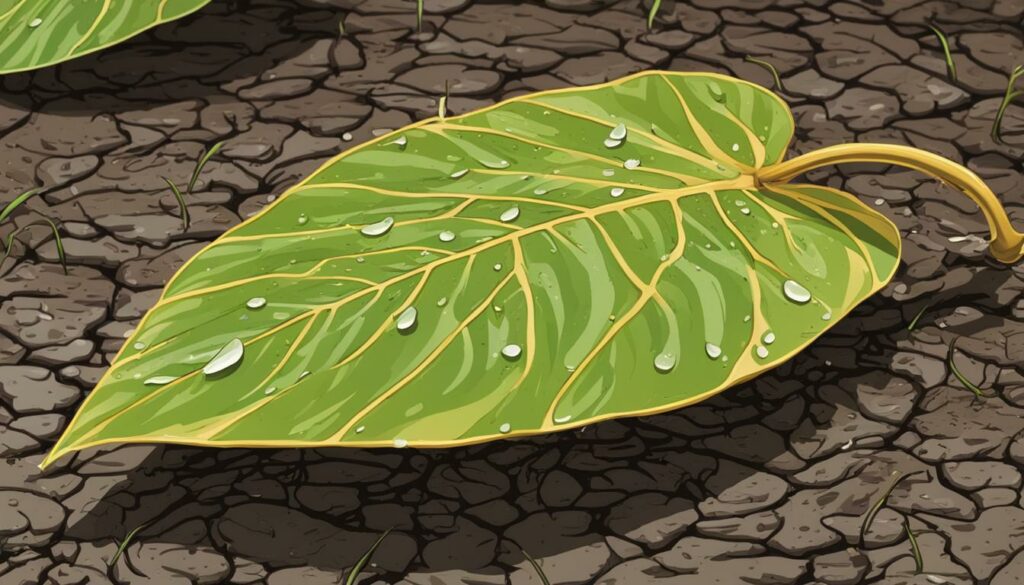
| Signs of Overwatered Philodendron | Solutions |
|---|---|
| Yellowing leaves | Adjust watering habits, allow soil to dry between waterings |
| Mushy stems | Ensure proper drainage, use well-draining soil |
| Wilting foliage | Prevent root rot by adjusting watering frequency and ensuring proper drainage |
Signs of Underwatered Philodendron
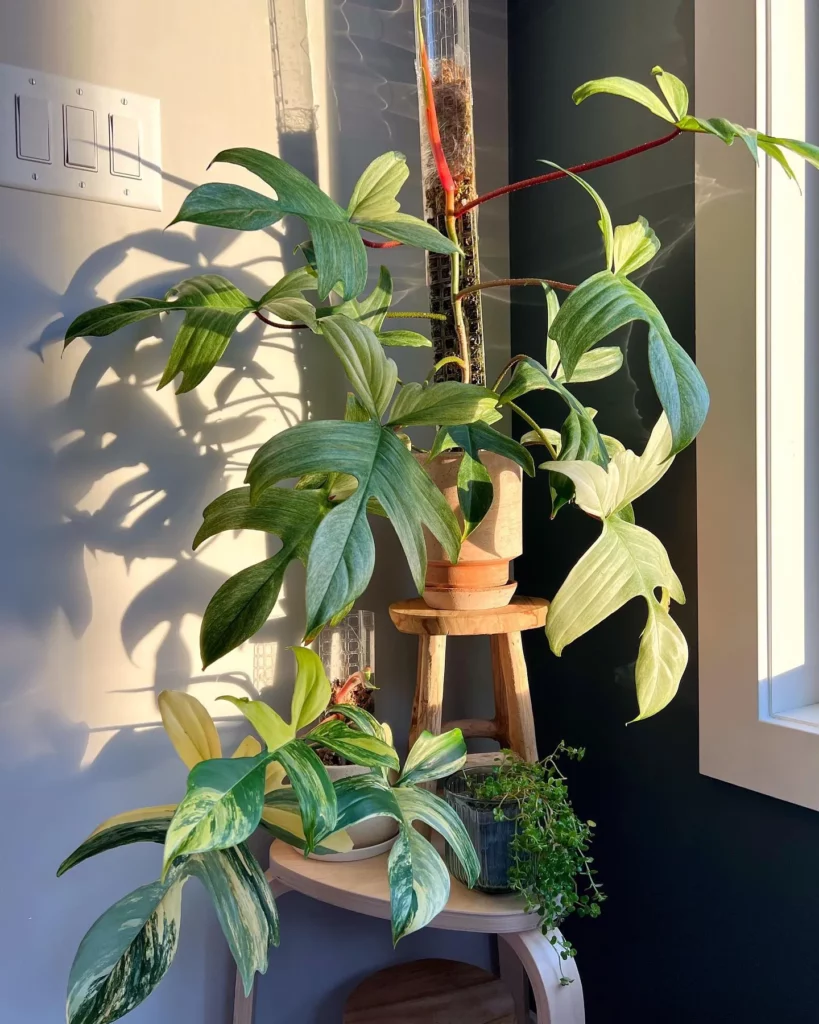
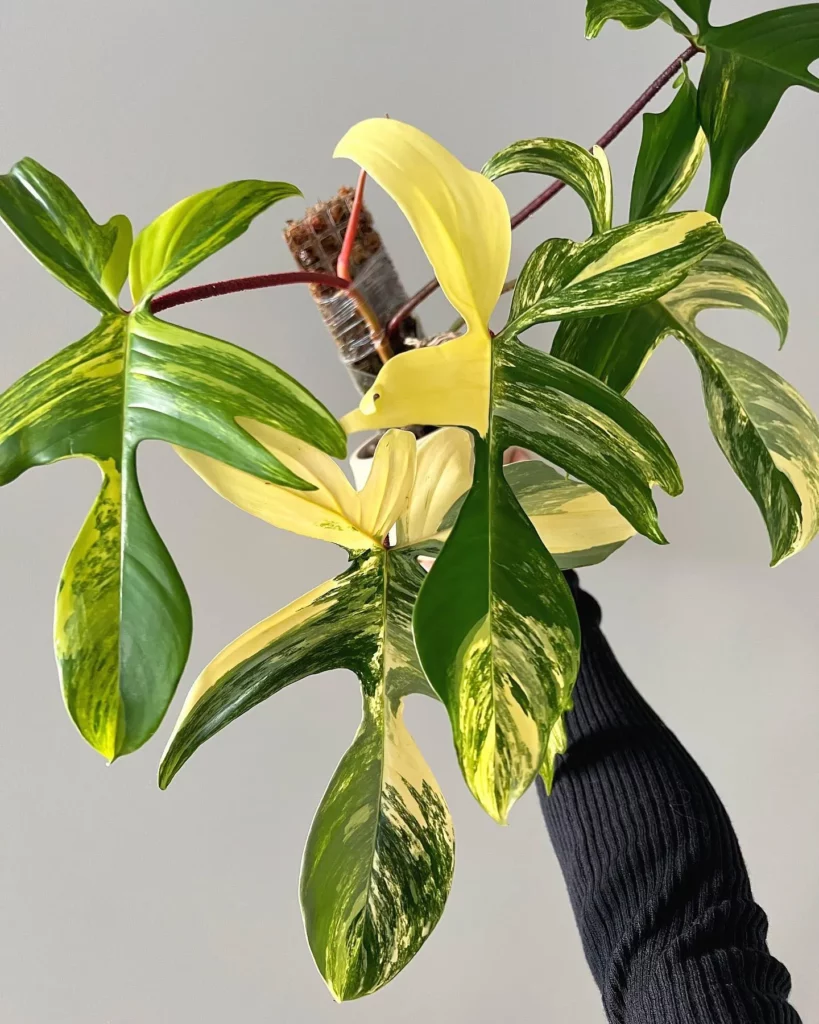

If you notice dry leaves and brown tips on your philodendron, it may be a sign that your plant is not receiving enough water. Underwatering can lead to dehydration and stress, affecting the overall health and appearance of your philodendron.
To address the issue of underwatering, it’s important to adjust your watering schedule and ensure that the top inch of soil is dry before watering again. This will prevent overwatering while providing the necessary hydration to your plant.
Common signs of underwatering:
| Signs of Underwatering | Possible Causes |
|---|---|
| Dry or crispy leaves | Insufficient water supply |
| Brown tips | Lack of hydration |
To prevent underwatering, it’s essential to maintain the right soil moisture for your philodendron. Regularly check the soil and only water when the top inch feels dry. Avoid overwatering, as this can lead to root rot and other issues.
FAQ
Why is my philodendron drooping?
Philodendrons can droop due to various factors such as overwatering, underwatering, poor lighting, excessive lighting, over fertilizing, pest infestation, low humidity, and cold temperatures. Identifying the specific cause and implementing the appropriate solutions will help revive your droopy philodendron.
What are the requirements for philodendron care?
Proper care involves understanding the watering and humidity requirements, choosing the right soil mix, and fertilizing sparingly. Philodendrons thrive in well-draining soil, require moderate watering, and prefer humidity levels between 50-60%. Fertilize once every few months with an organic fertilizer during the growing season.
What are the possible causes of drooping philodendrons?
Drooping philodendrons can be caused by water-related issues like overwatering or underwatering, light-related issues such as inadequate or excessive light exposure, pests and diseases like spider mites or mealybugs, and root-bound plants with tightly tangled roots.
How do I address overwatering or underwatering issues?
Overwatering can lead to yellowing leaves, mushy stems, and wilting foliage. Adjust your watering schedule, ensure proper drainage, and maintain the right soil moisture. Underwatering can result in dry or crispy leaves; adjust your watering schedule and provide adequate hydration to your philodendron.
What should I do if my philodendron is not receiving enough light or is exposed to excessive light?
Philodendrons require bright but indirect light. If your plant is not receiving enough light, adjust its placement near a window or supplement with artificial grow lights. If exposed to excessive light, adjust the placement or use sheer curtains to achieve the right balance.
How can I identify and treat pests and diseases on my philodendron?
Regularly inspect your philodendron for signs of pests such as tiny insects, webbing, or white fuzzy spots on leaves. Treat infestations by isolating the plant, using gentle soap and water solutions, or resorting to insecticides if necessary.
How can I increase humidity for my philodendron?
Philodendrons thrive in relatively high humidity levels between 50-60%. Increase humidity by using a humidifier, placing a tray of water near the plant, or grouping plants together to create a microclimate. Avoid placing philodendrons near dry air sources like heaters or air conditioners.
How can I prevent cold-related drooping in my philodendron?
Philodendrons prefer average room temperatures and can be sensitive to cold drafts. Avoid placing your plant near open windows or air conditioning vents. Provide a warm and draft-free environment for your philodendron to prevent cold-related drooping.
How often should I fertilize my philodendron?
Fertilize your philodendron once every few months during the growing season with an organic fertilizer. Follow the manufacturer’s instructions for application rates and dilute the fertilizer. Always err on the side of caution and fertilize sparingly to prevent burnt roots and stunted growth.
Why is repotting important for philodendrons?
Repotting is essential for philodendron maintenance as the soil in the pot can become depleted and compacted over time. This can lead to drooping and stunted growth. Repot your philodendron every 1-2 years using well-draining soil to provide fresh soil and space for root growth.
What preventative measures should I take for philodendron care?
Regularly inspect your plants for pests, keep infected plants isolated, and maintain optimal growing conditions. Consider using natural pest control methods like introducing predatory insects or using neem oil sprays. Regular repotting is crucial for plant health, preventing issues like root-bound plants.
How can I revive a wilting philodendron?
To revive a wilting philodendron, adjust your watering schedule to ensure the right soil moisture and proper drainage. Provide adequate light exposure based on the plant’s requirements. Use support options like tying drooping stems to stakes or using plant clips to help your philodendron regain its upright posture and thrive.
What are the signs of an overwatered philodendron?
Signs of overwatering in philodendrons include yellowing leaves, mushy stems, and wilting foliage. These indicate that the plant is receiving too much water, leading to root rot and overall decline.
What are the signs of an underwatered philodendron?
Signs of underwatering in philodendrons include dry or crispy leaves and brown tips. These indicate that the plant is not receiving enough water. Adjust your watering schedule and provide adequate hydration to prevent underwatering.
What are the light requirements for philodendrons?
Philodendrons require bright but indirect light to thrive. Place your plant near a window that provides ample natural light or supplement with artificial grow lights if necessary.

